Thrill of Adventure – Exploring the Mysterious World of Caving & Spelunking | Unveiling Earth’s Ancient History | Tips for Seniors & Safety Precautions
Caving, also known as spelunking, is the recreational activity of exploring natural underground cave systems, tunnels, and subterranean formations. Participants equipped with specialized gear and knowledge navigate through these dark and mysterious environments to observe unique geological features and experience the thrill of subterranean adventure. Please SHARE, SUBSCRIBE, and LIKE this blog and comment if you have been to some amazing caves.
- What is the Difference Between Spelunking and Potholing
- The Allure of Exploring Underground Worlds
- Caving and Spelunking for Seniors
- Safety Precautions and Responsible Caving
- List of Essential Equipment Needed for Caving & Spelunking
- Importance of Proper Clothing in Caving & Spelunking
- The Vital Role of a Reliable Buddy or Group in Caving & Spelunking Safety
- How to Locate Caves in Areas you are Traveling to
- Basic Caving & Spelunking Techniques
- How to Navigate Through Tight Spaces and Obstacles
- Nature's Underground Art Gallery: Geological Formations in Caves
- Caving & Spelunking Tours in Different Countries – suited for the senior
- Conclusion
What is the Difference Between Spelunking and Potholing
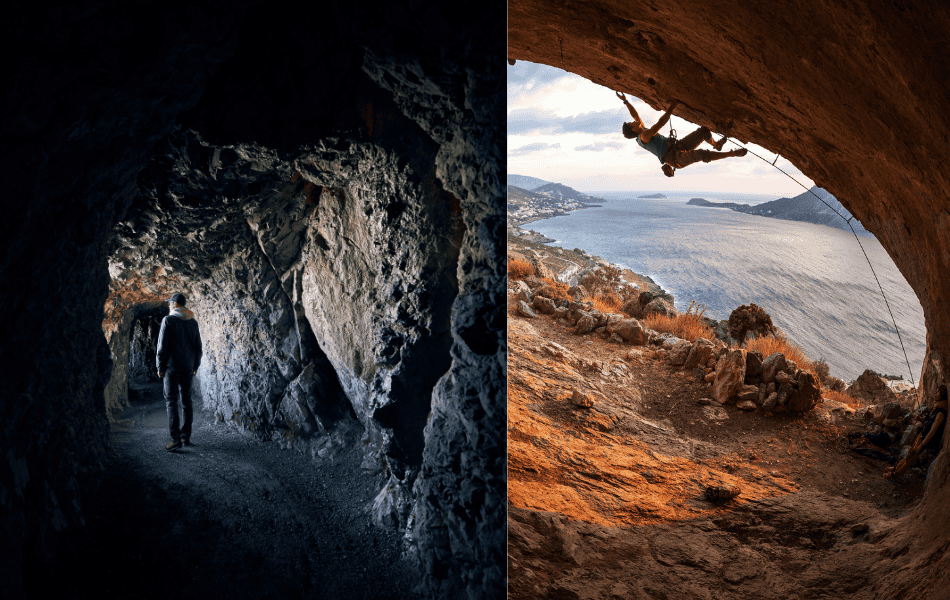
Spelunking and potholing are closely related activities, both involving the exploration of caves, tunnels, and underground formations. However, there are some distinctions in the terminology and regional usage:
- Spelunking:
- Spelunking is a more general and widely recognized term used primarily to describe the exploration of caves and underground environments for recreational purposes.
- It encompasses various cave types, including horizontal passages, vertical drops, and intricate chambers.
- Potholing:
- Potholing is a term commonly used in the United Kingdom and some other parts of Europe.
- It specifically refers to the exploration of caves and underground passages that often involve vertical descents, such as shafts, potholes, and vertical pits.
- Potholing typically emphasizes the use of ropes and technical equipment for descending into these vertical features.
In essence, while both terms involve cave exploration, “spelunking” is a more generic term that encompasses a broader range of cave types and exploration methods, whereas “potholing” is more specific to situations where vertical descents are a prominent aspect of the underground exploration, often requiring specialized equipment and techniques.
The Allure of Exploring Underground Worlds
Exploring underground worlds offers a captivating allure that beckons adventurers into the depths of the Earth. It’s a journey into the unknown, where darkness and mystery shroud every corner, evoking a sense of wonder and anticipation. The subterranean realms unveil breathtaking geological formations, from intricate stalactites to towering chambers adorned with shimmering minerals.
These hidden worlds whisper stories of Earth’s ancient history, providing a unique opportunity to connect with the planet’s deep past. The silence and isolation underground offer a profound escape from the chaos of the surface, creating a tranquil and introspective environment. For those who dare, caving reveals a surreal and enchanting realm waiting to be explored.
Caving and Spelunking for Seniors
Caving and spelunking is an adventure but can be physically demanding and may pose certain challenges for seniors, but it is not necessarily off-limits to older individuals. Whether a senior can go caving or spelunking largely depends on their overall health, physical fitness, and any pre-existing medical conditions. Here are some considerations for seniors interested in these activities:
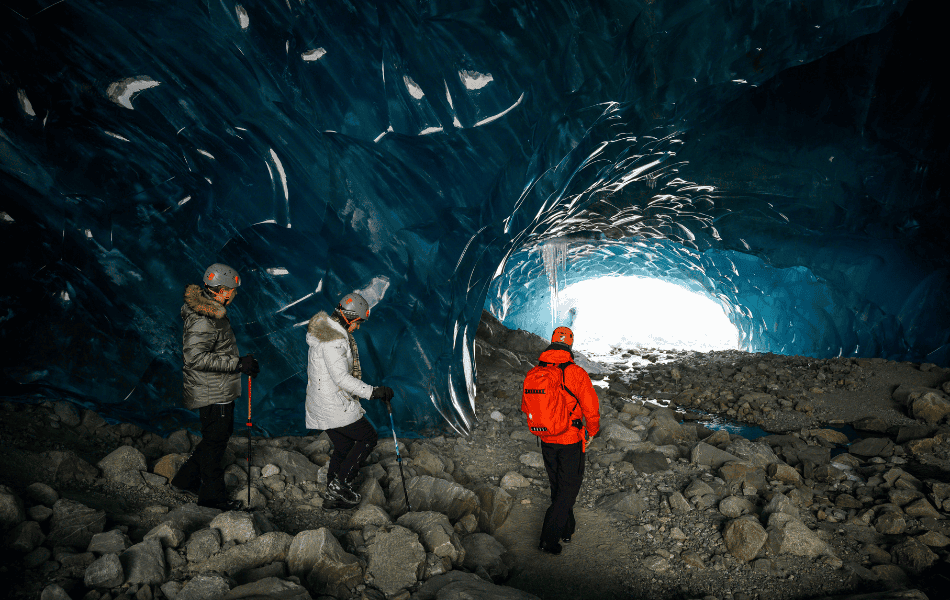
- 1. Health and Fitness: Seniors should assess their health and physical fitness. Individuals with good overall health and mobility may still be able to enjoy caving, especially in less challenging cave environments. Practice hiking before going caving, to increase your fitness level.
- 2. Consult with a Doctor: It’s advisable for seniors to consult with their healthcare provider before attempting caving, especially if they have underlying medical conditions or concerns.
- 3. Choose the Right Cave: Selecting an appropriate cave is crucial. Some caves are more accessible and less physically demanding than others. Opt for caves with easier terrain and minimal vertical challenges if you’re a senior beginner.
- 4. Expert Guidance: Seniors should consider going caving with experienced guides or groups who can provide support and ensure safety during the excursion.
- 5. Physical Preparation: Engage in physical conditioning exercises to improve strength, flexibility, and endurance, which can be particularly important for seniors.
- 6. Safety Measures: Seniors should be diligent about following safety protocols, wearing proper gear, and being prepared for unexpected situations.
- 7. Know Your Limits: It’s essential for seniors to recognize their physical limitations and not push themselves too hard. There’s no shame in taking a slower, more cautious approach.
In summary, while caving and spelunking can be physically demanding, some seniors may still be able to enjoy these activities with the right precautions, adequate preparation, and guidance. However, individual capabilities and health considerations should always be the primary factors when deciding whether to participate in such adventures.
Safety Precautions and Responsible Caving
Safety in caving is paramount. Always inform someone about your plans, carry essential equipment (helmet, headlamp, ropes), and stay with a group. Avoid reckless behavior, respect cave ecosystems, and minimize impact. Responsible caving ensures your safety and preserves these fragile, underground environments for future generations.
List of Essential Equipment Needed for Caving & Spelunking
I have also provided some recommendations on what and where you can purchase the equipment.
- Helmet: Protects the head from potential rockfalls and low ceilings. Tontron Adult Hiking Climbing Caving Work Helmet
- Headlamp: Provides hands-free illumination in the pitch-dark cave environment. Aikertec Headlamp Rechargeable, Super Bright Headlamp, and if you prefer a cheaper version but still good, Outdoor Pro Gear Led Headlamp Flashlight.
- Batteries: Extra batteries are crucial for headlamp backup.
- Ropes: Used for rappelling, ascending, and navigating tricky terrain. JIUXQT 16mm 32Ft/10m Climbing Rope Strong Rope
- Harness: Secures the caver and connects to ropes for vertical movements. I do advise you to watch this YouTube video on How to Choose a Climbing Harness
- Carabiners and Ascenders: For attaching to ropes and ascending safely. (A carabiner is a metal loop with a spring-loaded gate, commonly used in climbing and caving to secure ropes, harnesses, and other equipment. An ascender is a mechanical device used in climbing and caving that grips a rope to allow upward movement while preventing it from sliding back down.) ALPIDEX Climbing Rope Ascender Set
- Gloves: Protect hands from sharp rocks, cold, and moisture. Intra-FIT Climbing Gloves
- Caving Suit: Provides protection against abrasions and keeps clothing dry. ALP DESIGN Unisex Bitex speleo suit
- Boots with Good Traction: Sturdy, waterproof footwear for traction in slippery conditions. Lakeland Active Women’s Rydal Neoprene Insulated Rubber Wellington Boots
- Backpack: Carries extra clothing, food, water, and emergency supplies. Oak Creek Canyon Falls 30L Dry Bag Backpack
- First-Aid Kit: Essential for treating minor injuries in remote cave locations. A super blog post to read is Create the Perfect Caving Emergency Kit and I advise before you go caving, you do so.
- Map and Compass: Helps with navigation and cave exploration. Sportneer Compass
- Communication Device: A reliable way to stay in contact with the group or surface. Remember cell phones and GPS cannot work through the rocks of caves, so you do need a reliable communications device. I would recommend you contact Brentwood and speak to them about which communication device works best for you.
- Whistle: Used for emergency signaling. Eidyer Emergency Survival Whistle
Cave Survey Equipment: For documenting cave features and mapping. If needed – Land Area Measure Meter, Handhel Navigation Locator
Importance of Proper Clothing in Caving & Spelunking
Proper clothing is crucial in caving. Sturdy shoes with good grip provide stability on uneven terrain, while layers of clothing help regulate body temperature, ensuring comfort in the cave’s fluctuating conditions, from chilly chambers to sweaty passages, making for a safer and more enjoyable experience underground.
The Vital Role of a Reliable Buddy or Group in Caving & Spelunking Safety
Having a trusted buddy or group is paramount in caving. They provide support, share knowledge, and assist in emergencies, significantly enhancing safety. In the unpredictable underground environment, a partner can be a lifeline, helping to navigate challenges and ensure a safe return to the surface.
How to Locate Caves in Areas you are Traveling to
Locating caves in your local area or while traveling involves a combination of research, networking, and exploration. Here’s a step-by-step guide:
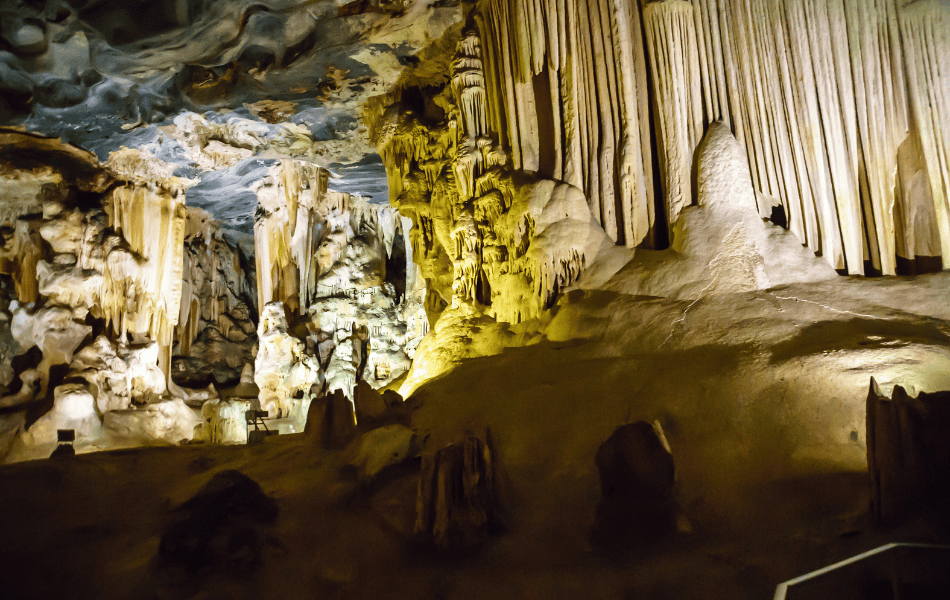
- Online Resources:
- Start with a search engine to find websites, forums, or databases dedicated to caving and cave locations.
- Explore websites of local caving clubs or associations, which often have cave directories or maps.
- Guidebooks and Maps:
- Visit local bookstores or libraries to find guidebooks that highlight caves in the region.
- Purchase or borrow topographic maps that might indicate cave locations.
- Caving Clubs and Forums:
- Join a local caving club or online caving forums where experienced cavers share information about known caves.
- Connect with fellow cavers who can provide tips and recommendations.
- SEC Caving Club, Wessex Cave Club, Lost Earth Adventures give courses, Descent Caving Group, Caves and Cavediving, An Expert’s 5 Favorite Caves for Beginners
- National and State Parks:
- Check with national or state parks in the area you’re traveling to, as they often have information on caves within their boundaries.
- Ask Locals:
- Inquire with local residents, hikers, or outdoor enthusiasts who might know about hidden cave entrances.
- Permit Requirements:
- Be aware of any permit requirements or regulations for cave exploration in the area. Contact local authorities or land management agencies for information.
- Safety and Access Concerns:
- Prioritize safety and ethical caving practices. Respect landowner rights and environmental preservation rules.
- Explore Safely:
- Always inform someone of your caving plans and estimated return time.
- Use GPS coordinates or landmarks to locate caves precisely.
- Approach caves cautiously, as their entrances can be hidden or hazardous.
- Take a Guided Tour:
- Consider joining a guided cave tour, which can be a safe and informative way to explore caves, especially if you’re new to caving.
Remember that caving can be dangerous, and it’s crucial to prioritize safety, follow ethical guidelines, and obtain necessary permits when exploring caves in unfamiliar areas.
Basic Caving & Spelunking Techniques
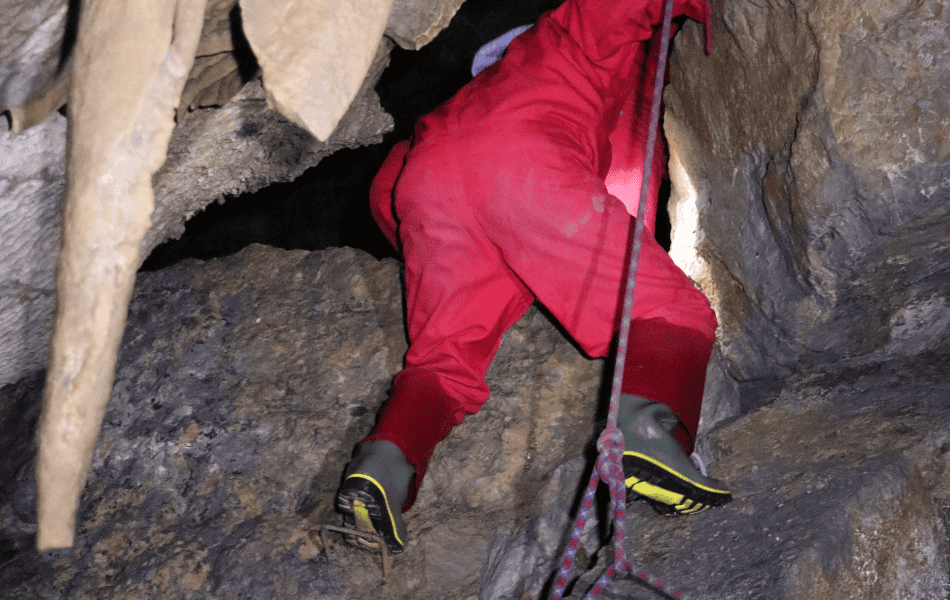
Basic caving techniques are essential skills for exploring underground environments safely. Crawling involves moving on hands and knees through tight passages while climbing entails ascending rock walls using holds and footholds. Rappelling is descending into vertical sections of caves using ropes and harnesses.
When encountering water, wading or swimming may be necessary. To navigate in the dark, cavers rely on headlamps and light sources. These techniques require physical agility, proper gear, and knowledge of cave features, enabling cavers to traverse diverse terrains and fully immerse themselves in the underground adventure.
How to Navigate Through Tight Spaces and Obstacles
Navigating tight spaces and obstacles in caving requires careful technique:
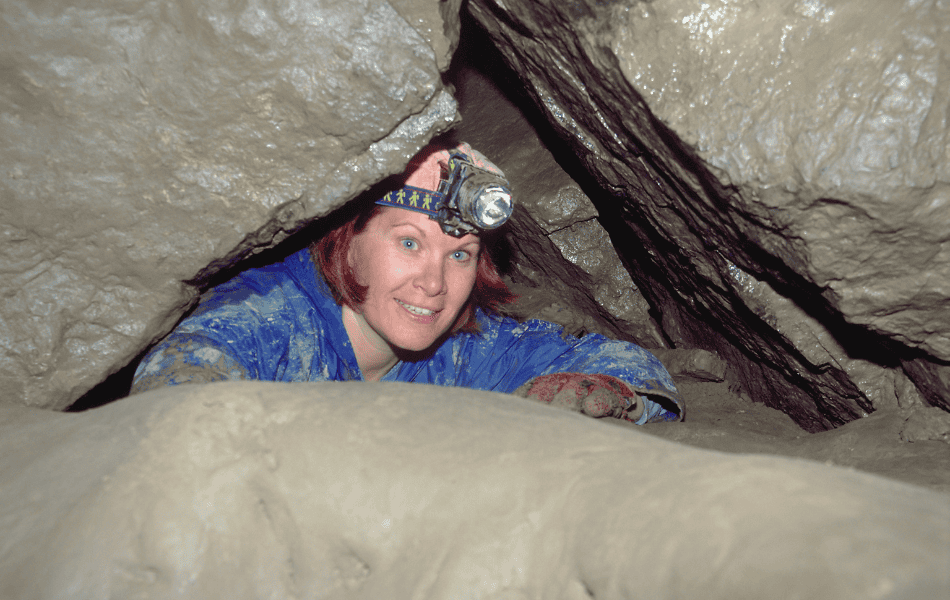
- Flexibility: Contort your body to fit through narrow passages.
- Slow and Steady: Move deliberately, avoiding sudden movements.
- Use Hands and Feet: Utilize all limbs for stability.
- Communication: Stay in contact with your group to coordinate movements.
- Problem-Solving: Assess obstacles, find the safest route, and adapt as needed.
Nature’s Underground Art Gallery: Geological Formations in Caves
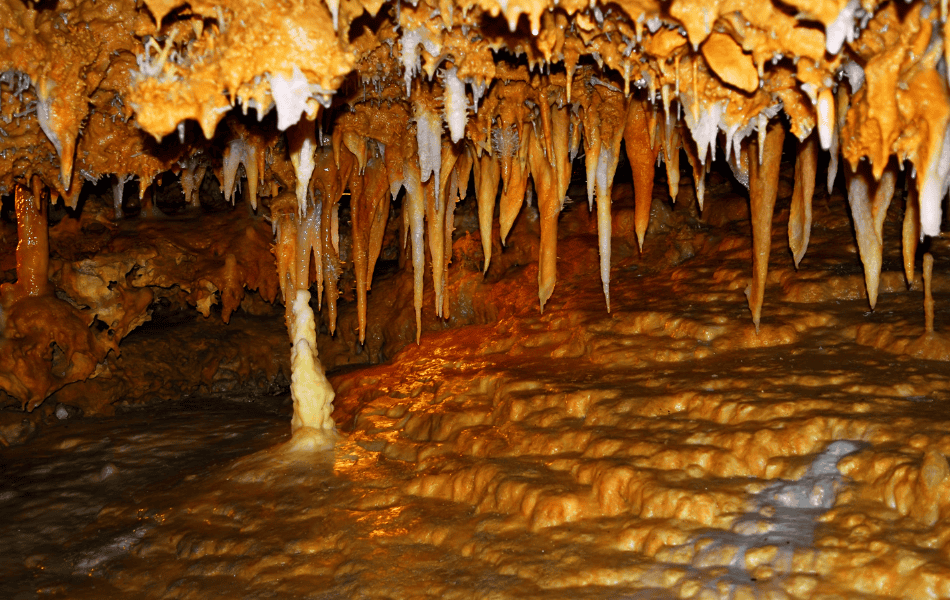
Cave formation is a geological ballet performed over millions of years. Rainwater seeping through soil absorbs carbon dioxide, turning it into a weak acid. This acidic water dissolves limestone and other soluble rocks as it percolates through fractures, gradually creating cavities.
As these voids enlarge, stalactites form from the ceiling as mineral-rich water drips down, while stalagmites rise from the floor. Flowstones, helictites, and other intricate features emerge from the slow deposition of minerals. This intricate dance between water and rock gives birth to the breathtaking underground landscapes that we explore in caves worldwide.
Caving & Spelunking Tours in Different Countries – suited for the senior
South Africa
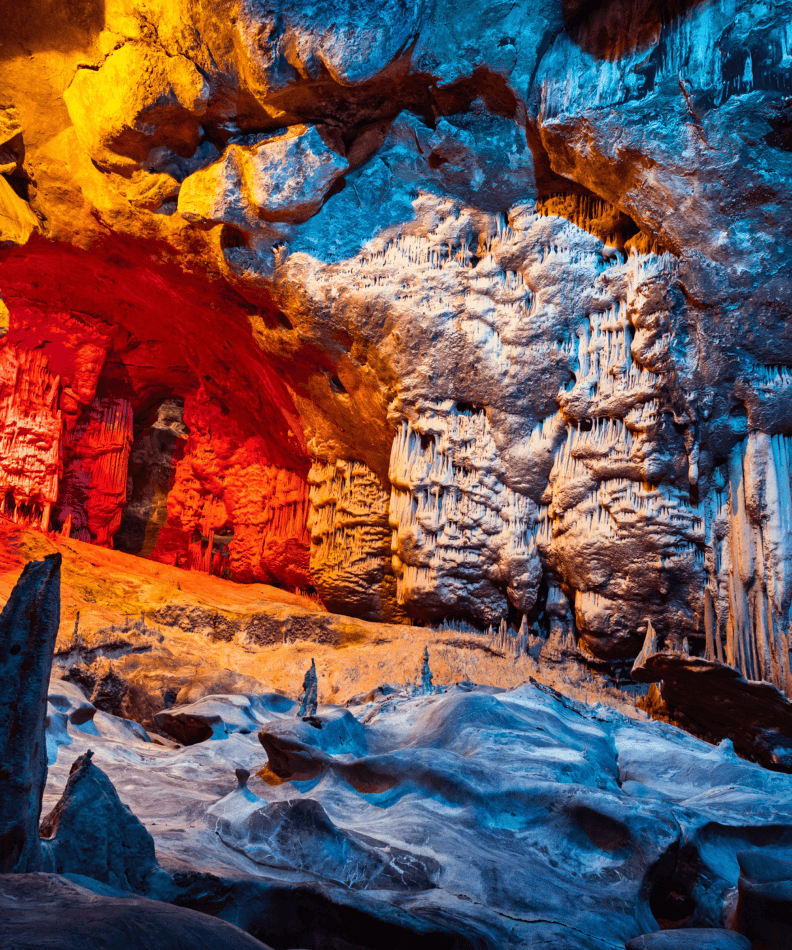
Caves in South Africa are renowned for their stunning diversity, from the vast chambers of Cango Caves to the intricate formations of Sudwala Caves, offering a captivating underground adventure.
Australia
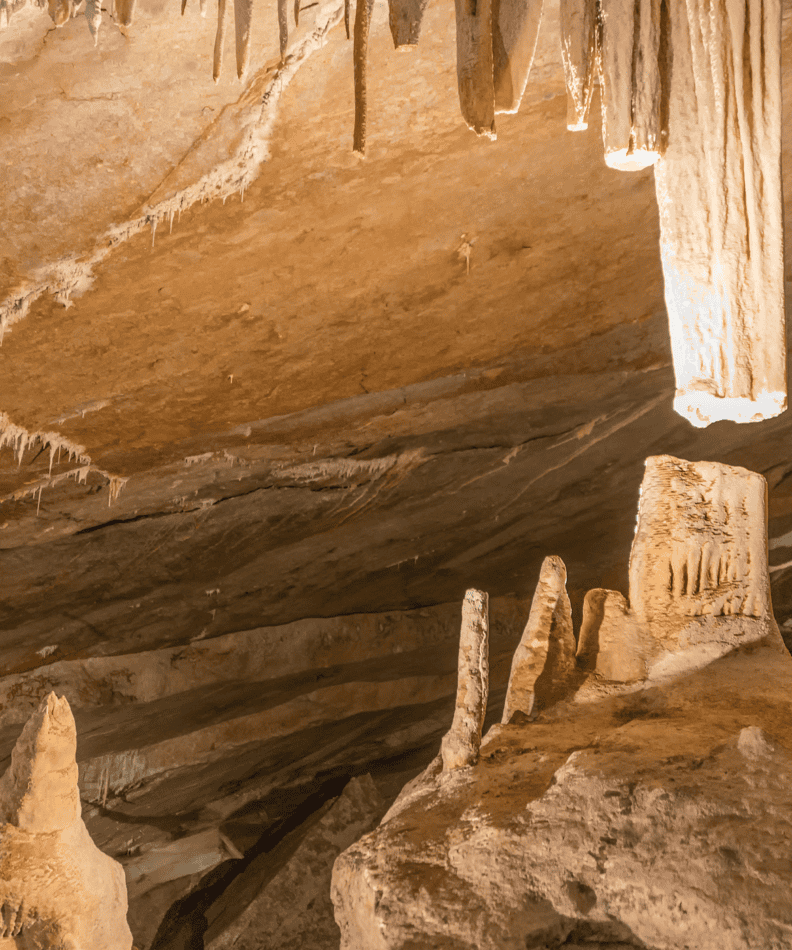
Caves in Australia are a testament to nature’s artistry, featuring a mesmerizing blend of ancient limestone formations and unique underground ecosystems, with famous sites like Jenolan Caves showcasing their awe-inspiring beauty.
Croatia
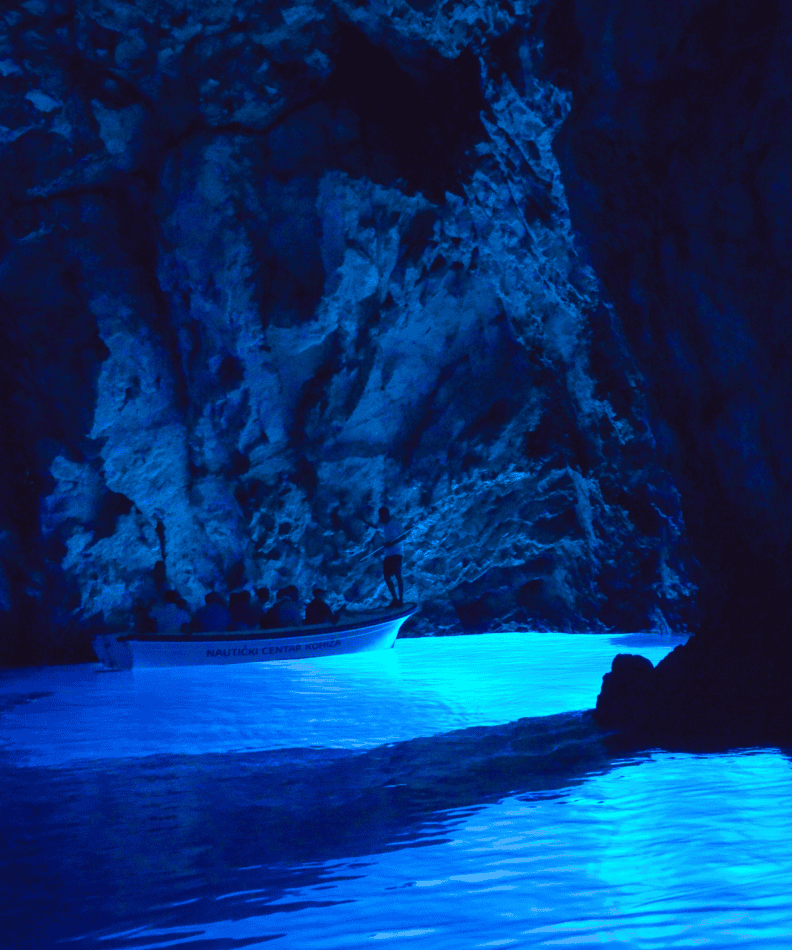
Caves in Croatia, such as the enchanting Modrič Cave, boast a wealth of mesmerizing stalactites, stalagmites, and underground rivers, inviting adventurers to explore their subterranean wonders.
Greece
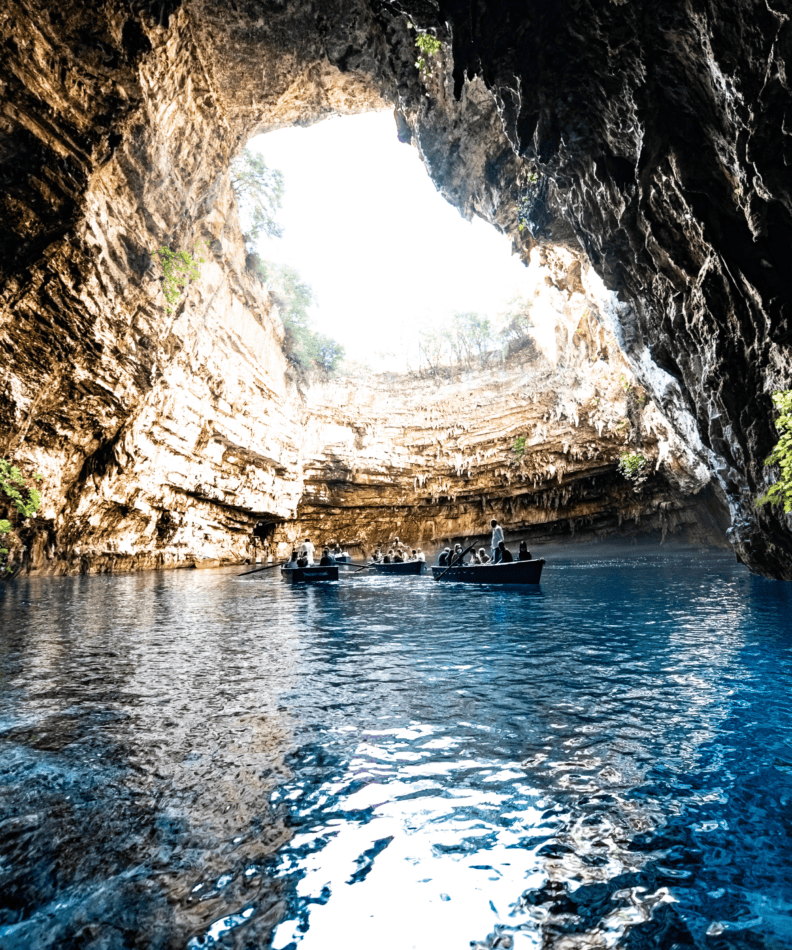
Caves in Greece, like the otherworldly Melissani Cave and the historic Diros Caves, offer a fascinating blend of crystal-clear underground lakes and chambers adorned with stunning formations, making them a testament to the country’s geological and cultural heritage.
Italy
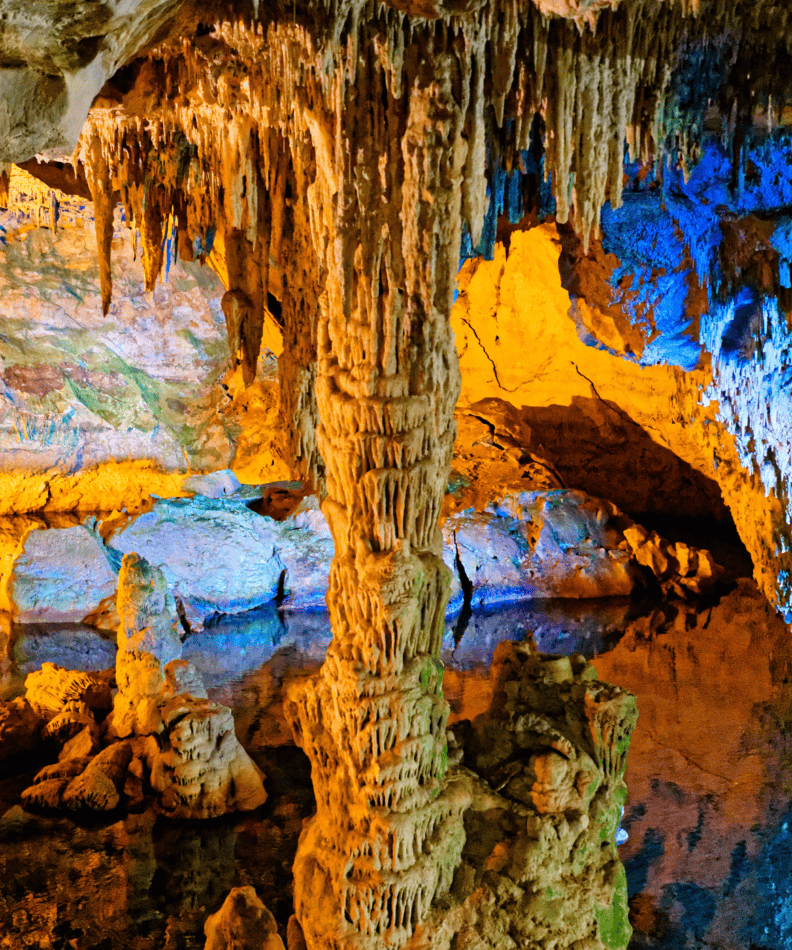
Caves in Italy, including the spellbinding Grotta Azzurra and the ancient wonders of Grotte di Frasassi, showcase a captivating fusion of natural beauty and cultural significance, drawing visitors into their awe-inspiring underground realms.
Montenegro
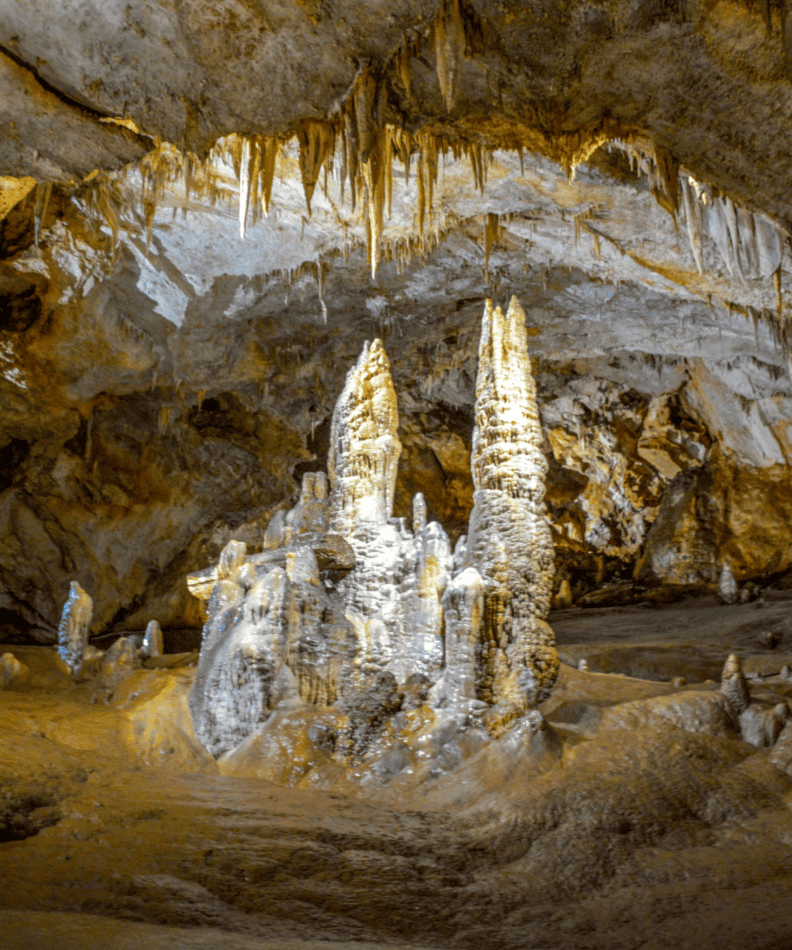
Caves in Montenegro, such as the mystical Lipa Cave reveal a hidden world of breathtaking stalactites, underground lakes, and geological wonders, inviting adventurers to explore their subterranean mysteries.
Netherlands

Caves in the Netherlands, like the fascinating Valkenburg Caves, offer a unique blend of subterranean history and enchanting limestone formations, providing a glimpse into the region’s geological and cultural past.
Japan

Caves in Japan, including the surreal Akiyoshi Cave and the ancient Ryugashido Cave, showcase a harmonious blend of intricate limestone formations and tranquil underground landscapes, creating a serene and captivating underground world.
England
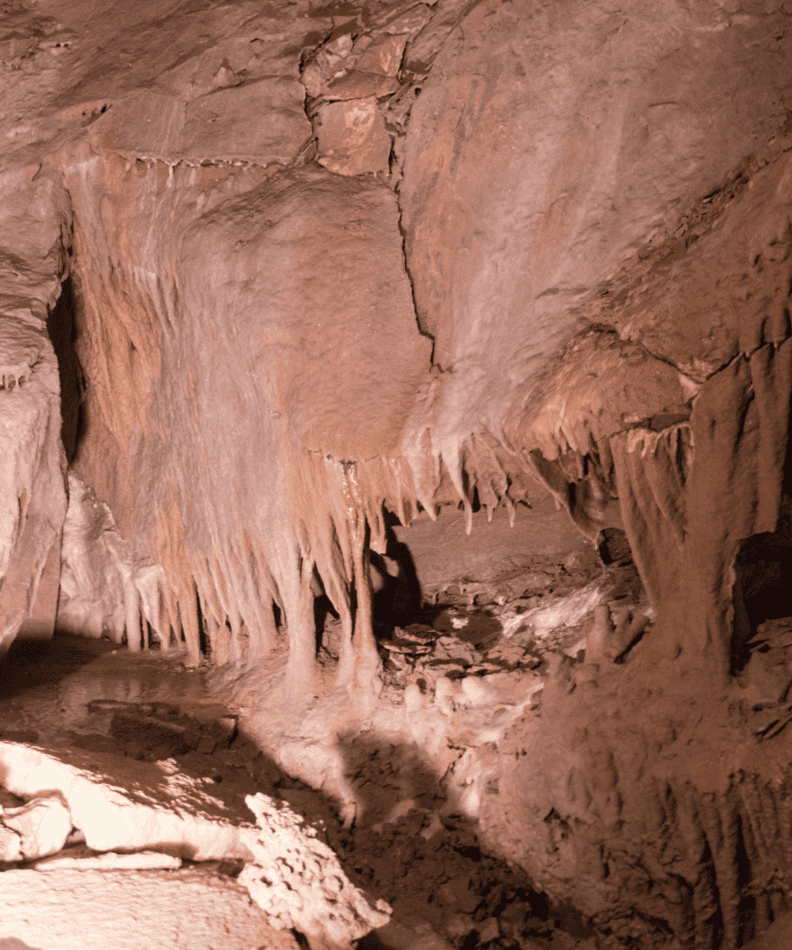
Caves in England, such as the iconic Cheddar Gorge Caves and the mystical Wookey Hole Caves, are rich in both geological splendor and cultural history, offering a fascinating journey through time and nature’s wonders.
Conclusion
In conclusion, caving and spelunking are activities that transcend age and physical limitations. Whether you aspire to become an advanced caver or are part of the baby boomer generation and may have concerns about crawling through tight spaces, rest assured that these underground adventures offer something for everyone.
With proper guidance, responsible practices, and suitable caves chosen to match your comfort level, the enchanting subterranean world is open for exploration, appreciation, and enjoyment by individuals of all ages and abilities. So, don’t let obstacles deter you; the wonders of caving are waiting to be discovered and cherished by all who seek them.
Recent Posts
Discover insider tips to find cheap flights from the UK, save on easyJet, Ryanair & BA, and score the best weekend and last-minute deals. Why You’re Paying Too Much for Flights Most UK...
Discover the sounds of travel, from laughing kookaburras to market chatter, church bells to ocean waves - a journey heard as much as seen. It always starts with a sound. The other day, walking...


One thought on “Exploring the Depths: Thrill & Wonder of Caving & Spelunking”
Comments are closed.